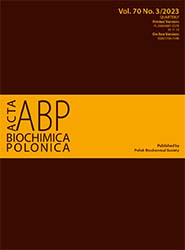Upregulation of miR-22 alleviates oxygen–glucose deprivation/reperfusion-induced injury by targeting Tiam1 in SH-SY5Y cells
Abstract
MicroRNA-22 (miR-22) has been reported to exert a neuroprotective effect. However, the specific role and mechanism of miR-22 in ischemia/reperfusion (I/R)-induced brain injury are still not known well. In this study, we evaluated whether miR-22 participates in I/R-induced neuronal injury and the potential mechanism by using an oxygen-glucose deprivation/reperfusion (OGD/R) model in vitro. Our results showed that miR-22 was significantly down-regulated in SH-SY5Y cells suffering from OGD/R. Up-regulation of miR-22 by its specific mimic could protect SH-SY5Y cells against OGD/R-induced injury. The luciferase reporter assay demonstrated that T-cell lymphoma invasion and metastasis 1 (Tiam1) was a direct target of miR-22. MiR-22 mimic obviously inhibited Tiam1 expression in OGD/R-exposed SH-SY5Y cells. Tiam1 siRNA could attenuate OGD/R-induced SH-SY5Y cell injury. In addition, Tiam1 siRNA reduced the activation of Ras-related C3 botulinum toxin substrate 1 (Rac1) in OGD/R-exposed SH-SY5Y cells, and up-regulation of Rac1 activity could attenuate the neuroprotective effect of miR-22 up-regulation. Furthermore, OGD/R exposure led to increased methylation of miR-22, and the demethylating agent 5-Aza-dC significantly up-regulated miR-22 expression and inhibited Tiam1 expression and Rac1 activation. Taken together, our results demonstrated that DNA methylation-mediated miR-22 down-regulation aggravated I/R-induced neuron injury by promoting the activation of Tiam1/Rac1 signals. Our findings provide a deeper understanding of I/R-induced brain injury and suggest that miR-22 may be a promising therapeutic target for this disease.
Copyright (c) 2023 Jiansong Yin, Yu Wan, Jing Wang, Mei Xue

This work is licensed under a Creative Commons Attribution 4.0 International License.
Acta Biochimica Polonica is an OpenAccess quarterly and publishes four issues a year. All contents are distributed under the Creative Commons Attribution-ShareAlike 4.0 International (CC BY 4.0) license. Everybody may use the content following terms: Attribution — You must give appropriate credit, provide a link to the license, and indicate if changes were made. You may do so in any reasonable manner, but not in any way that suggests the licensor endorses you or your use.
Copyright for all published papers © stays with the authors.
Copyright for the journal: © Polish Biochemical Society.


